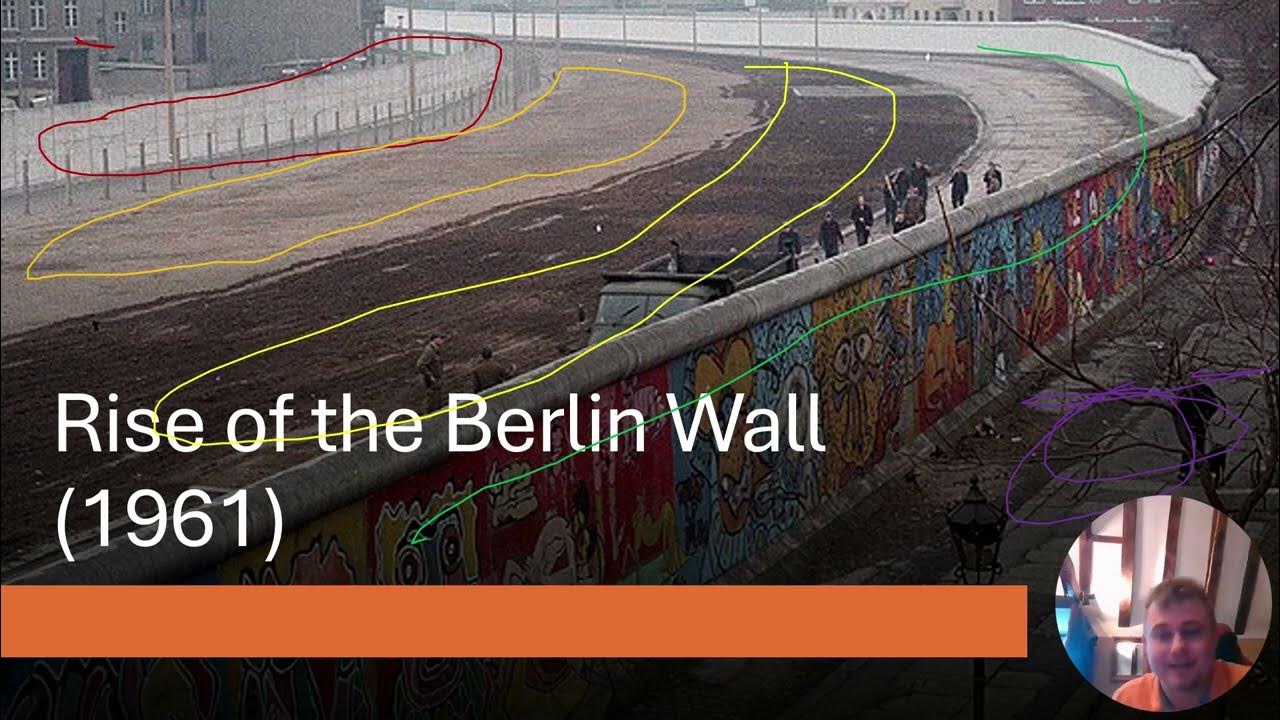TWO SUPERPOWERS of the COLD WAR [AP Euro Review—Unit 9 Topic 4]
Summary
TLDRThis video script delves into the political and economic impacts of the Cold War, focusing on the contrasting paths taken by the United States and the Soviet Union. The U.S. led the creation of organizations like NATO, the World Bank, and the IMF, while the Soviet Union responded with the Warsaw Pact and the Council for Mutual Economic Assistance. While the West prospered, Eastern Europe struggled under Soviet planned economies and harsh political control. Over time, revolts and reform efforts, especially under Gorbachev, ultimately led to the dissolution of the Soviet Union and a shift towards democracy and free-market economies in Eastern Europe.
Takeaways
- 😀 The Cold War was a political and economic standoff between the Soviet Union and the United States after World War II.
- 😀 The U.S. played a major role in Western Europe through military, economic, and political influence, notably via NATO, the World Bank, and the IMF.
- 😀 NATO was a military defense pact to protect Western Europe from Soviet expansion, with collective defense as its core principle.
- 😀 The World Bank and IMF were created to promote global economic stability, prevent another Great Depression, and facilitate global trade.
- 😀 The World Trade Organization (WTO) was established in 1995 to set rules for international trade and reduce tariffs between member nations.
- 😀 In Eastern Europe and the Soviet Union, the Soviet Bloc countries faced political and economic dominance by the USSR, which led to significant struggles.
- 😀 Soviet Bloc nations relied on a planned economy model, where economic output was controlled by the Soviet Union, resulting in inefficiency and poor living conditions.
- 😀 Stalin's five-year plans aimed at rapid industrialization but often had disastrous consequences, including widespread starvation due to forced collectivization.
- 😀 Under Khrushchev's leadership, there was an attempt at destalinization, with some reforms such as more civil liberties and relaxed controls over the economy, but a recession hindered progress.
- 😀 The Soviet Union responded violently to uprisings in Hungary (1956) and Czechoslovakia (1968), crushing attempts for political reform and maintaining strict Soviet control.
- 😀 By 1989, with Gorbachev's policies of glasnost and perestroika, Eastern Bloc nations began to break free, leading to the dissolution of the Soviet Union by 1991.
Q & A
What role did NATO play in the Cold War?
-NATO (North Atlantic Treaty Organization) was a military defense pact formed by the United States and several Western European nations to counter the threat posed by the Soviet Union. Its primary aim was mutual defense: if one member was attacked, all other members would respond collectively.
How did the United States contribute to rebuilding Europe after WWII?
-The United States contributed to Europe's post-WWII recovery through initiatives like the Marshall Plan, which provided economic aid, and the establishment of institutions like the World Bank and the IMF to stabilize the global economy and promote trade.
What was the purpose of the World Bank and the IMF?
-The World Bank was established to provide loans to countries rebuilding after WWII and later to developing nations. The IMF aimed to facilitate international currency exchange and encourage global trade, with a focus on reducing tariffs between member nations.
How did the Soviet Union attempt to control its satellite states economically?
-The Soviet Union created the Council for Mutual Economic Assistance to bind satellite states into a mutually dependent economic system. This system, based on planned economies, required these nations to produce goods for the benefit of the Soviet Union, often to their own economic detriment.
What was the Soviet Union's economic model, and why did it fail in the long term?
-The Soviet Union's economic model was based on a planned economy, where the government controlled what goods were produced and how resources were allocated. This model led to inefficiency, stagnation, and failure to meet the needs of its people, ultimately resulting in economic decline.
What was the significance of the Berlin Wall in the Cold War?
-The Berlin Wall was built by the Soviet-controlled East German government to prevent East Berliners from fleeing to the democratic West. It symbolized the stark division between the capitalist West and the communist East during the Cold War.
How did Nikita Khrushchev's policies differ from Stalin's?
-Nikita Khrushchev's policies were characterized by 'destalinization,' which sought to reduce the harsh repression and authoritarianism of Stalin's era. Khrushchev eased restrictions on art and civil liberties, scaled back the secret police, and attempted some economic reforms, although these were limited due to the economic downturn.
What led to the Hungarian Revolution of 1956, and how did the Soviet Union respond?
-The Hungarian Revolution of 1956 was sparked by calls for free elections, Hungarian independence, and the removal of Soviet influence. The Soviet Union responded by sending troops to crush the revolution, resulting in nearly 3,000 deaths and reinforcing Soviet control over Hungary.
What was the Prague Spring, and how did the Soviet Union react?
-The Prague Spring of 1968 was a period of liberal reforms in Czechoslovakia under communist leader Alexander Dubček. These reforms included greater political freedoms and decentralization of the economy. The Soviet Union responded by invading Czechoslovakia with Warsaw Pact troops to stop the reforms and strengthen the control of the Communist Party.
What were 'glasnost' and 'perestroika,' and how did they contribute to the fall of the Soviet Union?
-'Glasnost' (openness) and 'perestroika' (restructuring) were policies introduced by Mikhail Gorbachev in the 1980s. Glasnost allowed for more political openness and freedom of expression, while perestroika introduced limited economic reforms. These policies contributed to the weakening of the Soviet Union's centralized control, ultimately leading to its collapse in 1991.
Outlines

このセクションは有料ユーザー限定です。 アクセスするには、アップグレードをお願いします。
今すぐアップグレードMindmap

このセクションは有料ユーザー限定です。 アクセスするには、アップグレードをお願いします。
今すぐアップグレードKeywords

このセクションは有料ユーザー限定です。 アクセスするには、アップグレードをお願いします。
今すぐアップグレードHighlights

このセクションは有料ユーザー限定です。 アクセスするには、アップグレードをお願いします。
今すぐアップグレードTranscripts

このセクションは有料ユーザー限定です。 アクセスするには、アップグレードをお願いします。
今すぐアップグレード5.0 / 5 (0 votes)






